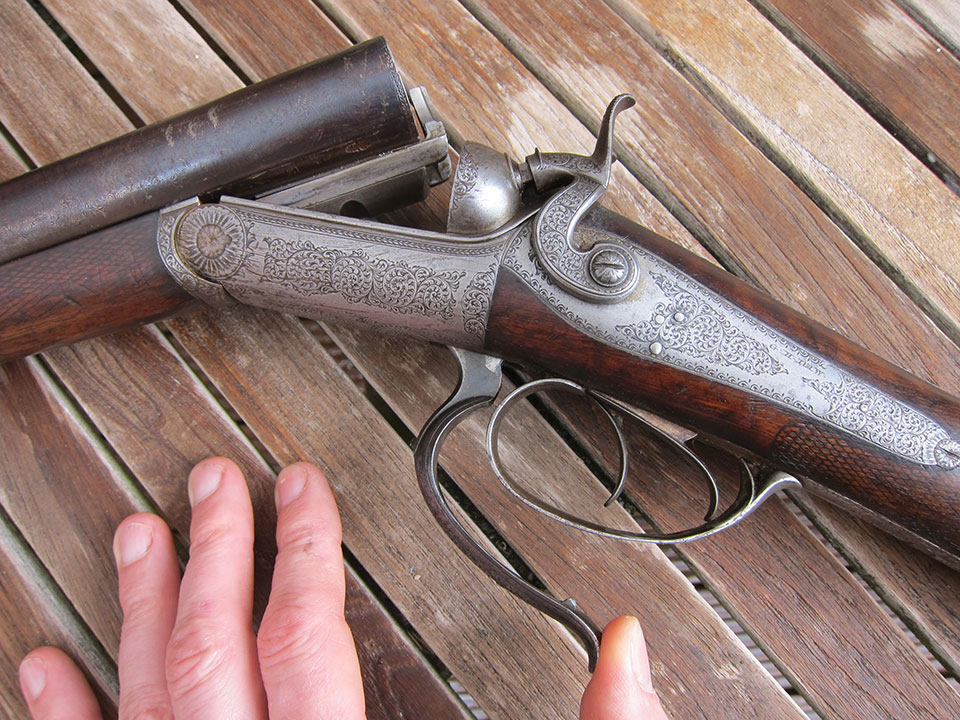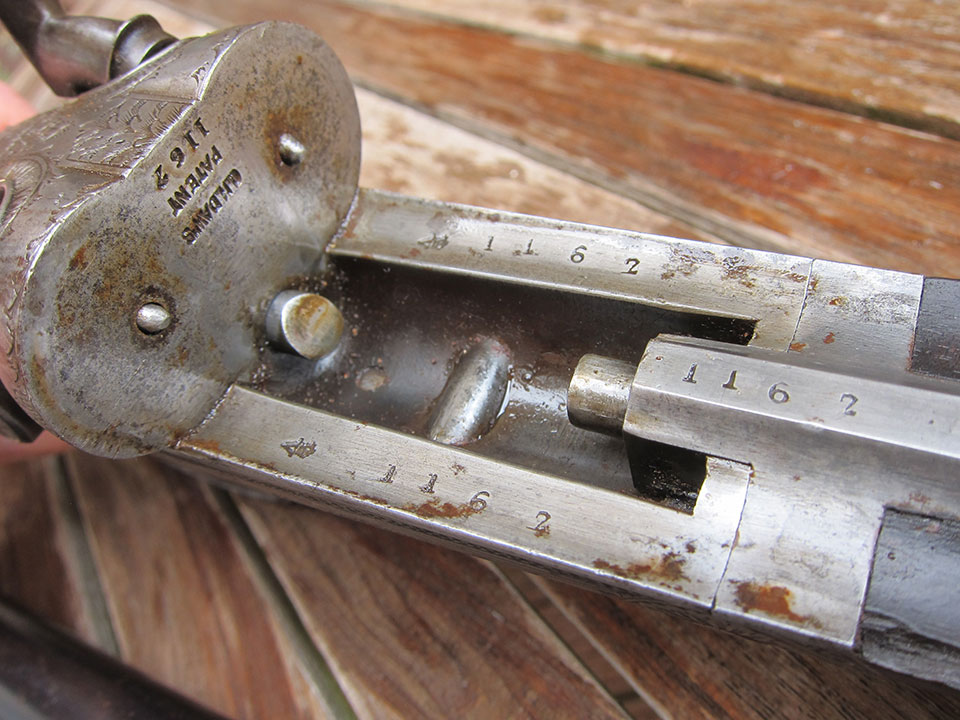There are borders to most things. barriers or geographical features beyond which one area ends and another begins. My borders in interest, such as they are, could be the years 1861 and 1939. I’m not especially involved with guns of the pin-fire era, or earlier, and once WW2 got started, most of what I deal with was already in the field.

Guns of the post-war decades are, to my mind essentially recent manifestations of old technology, they offer little in terms of improvement and nothing in terms of innovation, save for the odd tweak and some time-saving production adjustments.
So, why 1861? Well, the following year, a certain gunmaker of Threadneedle Street in London patented the first really modern sporting shotgun and presented it to the British sportsman. After centuries of muzzle loading, the advent of pin-fire and the breech-loading guns that came with it, it was only a matter of time before someone came up with a less clumsy detonation system for breech loaders. Pin-fire was a transitionary breakthrough but it was crude and unsatisfactory.
Lancaster saw the need early, patented his 1852 ‘base fire’ cartridge and made some beautiful ‘hares ear’ hammer guns to shoot it. Lancaster’s problem lay in the success with which he guarded the supply of ammunition; holding a monopoly. Doubtless, he thought this would ensure he made squillions when everyone had to buy their shells from him! Instead, people saw it as a problem and thought ammunition would be hard to get. So, many stuck with pin-fire and base-fire never really took off.
Daw’s cartridge was visually similar to Lancaster’s. but the priming mechanism was essentially modern and more efficient than Lancaster’s. Ammunition makers Eley Bros decided it was a winner and that they would mass-produce the ammunition and make it commercially available. Daw, like Lancaster tried to monopolise it, but lost the court case with Eley and, in 1865, the floodgates opened. Suddenly, everyone could get centre-fire ammo, so everyone started making centre-fire guns. Everyone still does.
So, my interest really perks up with the advent of centre-fire. I use my old guns and can’t be bothered with the fuss of muzzle loading on a regular basis. Making pin-fire cartridges is possible but, frankly, I have better things to do.

I was, therefore intrigued when a client brought me a gun he had described on the ‘phone as a ‘G.H Davis’. What it was, in fact, according to the nicely flat-filed rib, was ‘G.H Daw’s Patent Central Fire, 57 Threadneedle Street, London.’ The action face is stamped ‘GH Daw’s Patent 1162’ and the gun is given serial number 1162, in honour of the patent number. This is early!
Here was a very unmolested gun from the dawn of the centre-fire. A nice quality back-action hammer gun, with snap under-lever and Schneider-type locking bolt of rounded bars locking under the two barrels.. The 30” damascus barrels were in good shape- free from pits and measuring 30 thou’ plus in most places. A shootable piece of history and it actually fitted me well! I wanted to keep it but, on hearing it was coming in, I had promised it to a friend.
Rats! I had made the commitment and was bound to honour it. I had not expected the gun to be this clean or I may have kept quiet. I thought it would turn out to be just a curio and this particular friend had good reason to want a gun like this: he now owns the company name of G.H Daw.
The man in question is James Blacker; the ‘& Son’ bit of ‘Bill Blacker & Son’, the pre-eminent London barrel makers. James shares my interest in the history of gun-making from this middle period of Victorian firearms development and has cleverly brought it to bear through his ownership of this almost forgotten hero of the trade. I say that. However, among gunmakers Daw is well known. To the shooting public, Purdey or Holland & Holland are household names. Daw certainly is not. Perhaps we shall see more of the firm, as James gathers historical pieces about it wherever he can.
I look forward to visiting James in a few months to see his growing collection of Daw memorabilia. He can be confident that when he arrives at a shoot with his hammer gun under his arm that he will be shooting the oldest example of a centre-fire sporting gun in the line, by a British maker who really saw the future and presented us with our modern guns.
Published by Vintage Guns Ltd on (modified )




